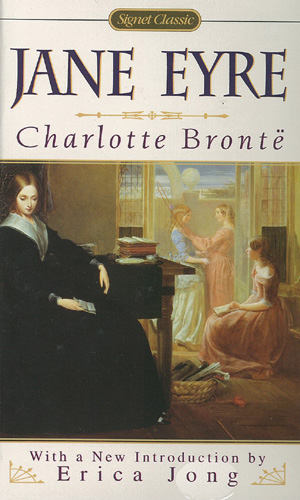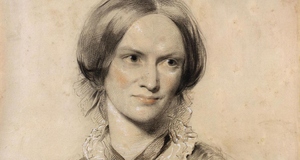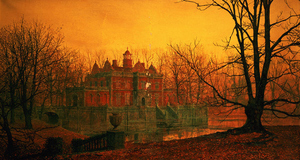Opinion:Jane Eyre as a Female Gothic Novel
By
2014, Vol. 6 No. 04 | pg. 1/1
KEYWORDS:
Charlotte Brontë invests gothic elements in Jane Eyre with a symbolic meaning to create a new, ‘female’ language. It is through this female Gothic language that Brontë creates a heroine whose autobiographical mode of writing is used to trace a story of female rebellion and search for identity. Although the use of gothic as the new ‘female’ language is a subversion of the predominant phallocentric language of the time, the need for a woman writer to make her assertions through the gothic, the symbolic and therefore the indirect implies that this new female gothic also represents the agency the woman and girl in 19th century Victorian England did not have. The romantic aspect of Gothic is used to reflect and rebel against this reality which is done from the Eurocentric perspective of a 19th century British woman.  Brontë cleverly constructs a female language by giving her heroine a ‘gothic’ imagination. On another level, Jane Eyre tells her ‘Reader’ how she was influenced by this Gothic imagination as a child. The younger Jane wants the book she reads to be ‘‘stored of pictures.” Jane’s imagination, being unlike the one of “contended, happy little children,” and having a nascent, “underdeveloped understanding,” construes the images she finds in “Bewick’s History of British Birds” in her own unique way. For “the fiend pinning down the thief’s back” and the “black horned” things were objects of terror for her. These “half comprehended” but ‘strangely impressive notions are also influenced by Gothic novels like “Pamela” and “Henry, Earl of Moorland” and later “maturing youth” adds “to them a vigour and vividness beyond what childhood could give.” Ironically, the Gothic imagination she imbibed through the male authored texts translates into the language in which she tells her story. Her gothic does not solely breach the classical, as Robert Heilman (“Charlotte Brontë’s ‘New’ Gothic”) notes, but it is a medium through which both Brontë and Jane present their feminist story in a female language otherwise unacceptable to the Victorian readership. Having established this, the Gothic is used through the imagery of enclosed spaces of the house to explore the constrictions placed on the female body and the fear of “female incarceration within domestic spaces” (Smith). Ironically, by using ‘enclosure’ to explain female constrictions, Brontë gives space to the female body in literary texts. The red room incident has multiple symbolic meanings, one of which is the entrapment of Victorian women in the confines of the male dominated space of the house. The “square chamber” with its “red carpet,” “crimson cloth” against the “white” pillows, “snowy” counterpane suggests the entrapment of the Victorian woman as either the angel in the house, or the mad woman in the attic, as having either extreme restraint or passion. Later Jane expresses “the restlessness” which “agitated me to pain” when she is confined to the ‘battlements’ of Thornfield. Given Brontë’s seclusion in her house, and her life as a governess, she writes of what Gilbert and Gubar (”Infection in the Sentence”) call, “the woman writer’s sense of powerlessness” and fears about occupying “incomprehensible spaces.”The representation of the entrapped female body leads to the issue of suppression of female sexuality. Bertha Mason is the Gothic symbol through which female sexuality and passion are represented. Bertha is described as “a clothed hyena,” the “foul German spectre-the vampyre,” displaying “virile force” and being almost equal to her husband in stature. The intention of this Gothic representation is to show that if a woman was not trapped within the limits of socially approved domesticity, she would be shut behind the “small black door in some Bluebeard’s Castle.” As Elaine Showalter notes (“Charlotte Brontë: Feminine Heroine”) the periodicity of Bertha Mason’s attacks suggest a connection to the menstrual cycle. This is a critique of society which was bent on controlling female sexuality, the expression of which was labelled as ‘madness.’ For, the 19th century physicians “worried” that menstruation “could” cause temporary insanity, making the woman attack people, destroy furniture- just as Bertha Mason ‘apparently ‘ does when she bites her brother Richard Mason, and Jane is called in for help to ensure that this event in recoded in her memory to recount to the ‘Reader.’ The parallels between Jane and Bertha are drawn to suggest that if Jane seeks equality, love, an identity, she has to repress her passionate side. If Bertha was “crawling on all fours” like an animal in her “den,” Jane was like a “mad cat’, a “picture of passion” in the Red Room then suggesting Jane, like Bertha was punished for expressing passion ( ‘insanity’ in the Victorian sense which would attribute it to Jane’s passage through the menstrual cycle). The older Jane consciously portrays the younger Jane as the ‘mad’ Bertha, and describes Bertha in terms of the ‘other’ to define her older self. From being the ‘mad cat’ to the ethereal ‘’malicious elf’’, like a “linnet” she has to project herself as being devoid of sexuality. Rochester compares “Jane’s clear eyes to the red balls yonder” wishing to see in Jane what Helen Moglen (“Creation of a Feminist Myth”) calls,” the angelic woman purged of all sensuality n sexuality,” The genre of the female Gothic is characterised by restoration of identity through the discovery of a lost mother, in Jane’s case Diana and Mary, her sisters. The moon and moonlight are personified as matriarchal guiding forces, asserting the importance of Jane finding such a figure to establish her identity in a patriarchal society. The fissure between the split chestnut tree, is momentarily presided over by the moon, with “her” half overcast blood red disk, throwing a “bewildered, dreary glance” at Jane and vanishing instantly. Jane and Rochester, cannot marry until Jane restores her identity by finding a matriarchal figure. Diana and Mary are her matriarchal guides, whom she finds after searching for such figures throughout in the novel. It is the “white human form” of the moon “inclining a glorious blow earthward” that directs Jane to leave Thornfield, asking her to “Flee Temptation,” the temptation of becoming a “stranger” to herself by Rochester’s overpowering treatment and also escape being the fallen woman she would be seen as having married while Mrs Rochester lived. It is the matriarchal spirit guiding Jane to find her mother figure, to establish her identity before marrying Rochester. The symbolic function of moonlight highlights the importance of dreams, and paintings in Jane Eyre. These voice female anxiety about being trapped as the ‘angel of the house’ through marriage, are prophetic of how Jane’s feminist ambition will be achieved within the gothic framework of the novel. The “anxious excitement” and “regretful conscience of some barrier dividing” her and Rochester felt by Jane is expressed through the ‘child’ in her dreams; the child, which according to Bessie was “a sure sign of trouble.” Jane is aware of the trouble their unequal marriage would bring. The “tensions of the engagement period” (Gordon) are voiced through dreams, so is the prophetic escape of Jane from this unequal marriage. When Jane comes to the “dreary ruin” of Thornfield on a moonlit night in her dream, it is an indication that that patriarchal authority will give way to accept Jane as an equal. Similarly, in Jane’s third watercolour painting, her “presentment,” the “crescent” is like a “kingly crown” over the colossal head of Latmos – Rochester’s blinding is foreseen as is the fact that Jane will be his guide, just as she is when he falls off the ‘Gytrash’. Rochester’s metaphorical castration through blinding, hinted throughout in the text throughout, is then a way in which Jane creates a space for herself, how Brontë asserts the need for such a space where an equal marriage is possible. If these gothic elements voice female anxieties, they also acknowledge the absence of such a voice for Victorian women. Further, the gothic intervention, resolution of the plot does suggest that though Jane cannot but love Rochester, she has to acquire economic independence and a family to unite with him and he too has to change. The symbolic ‘punishment’, of Rochester, to show her as Jane’s equal then suggests the lack of any other means to make him Jane’s equal in an overtly patriarchal world. When Jane cannot marry Rochester for the fear of losing her identity by his overpowering her and showering her with material gifts, Berth rents the bridal veil, symbolising the failure of their marriage, Bertha tries to burn Rochester after he confides in Jane – here Bertha functions as the agency Jane could not have, having supressed the socially unacceptable shades of passion in her, having achieved the balanced behaviour of Miss Temple, if not the excessive restraint of Helen Burns. When the child in Jane’s dreams dies, rolling from Jane’s knees, symbolic of Bertha’s death, therefore symbolic of the death of younger Jane’s passion, gothic intervention brings Jane to Rochester. Symbolically, “the candle is burnt out, the room is full of moonlight,” that is Jane has found her ideal matriarchal guides and more explicitly, a voice calls out to her, “Jane, Jane, Jane!” The actions for which Jane has the will are enacted through external gothic agents, not her own agency. Jane’s ambition of female improvement had been achieved, yet she had to return to Rochester. Social improvement, economic independence, even rejecting St. John River’s proposal, “the extraordinary contempt of a young virginal woman for the Victorian concept of sex as duty” (Mago) were not sufficient realisations for her. The fact that Jane writes a gothic novel to represent female desire implies that she is not satisfied, that the society is not ready for such feminist representation. Her feminist intention cannot be doubted for she clearly insists that “women feel just as men feel” and that they need faculty for expression of their suppressed feeling. Though Rochester is “no better than the old lightning-struck chestnut tree in Thornfield orchard” with his “crippled strength” and “seared vision,” he will still give a “bountiful shadow,” dependence to Jane. Marriage also makes it “impractical” for Jane to teach Adele. This is not a loophole in Jane’s “bright visions…of life, fire, feeling,” her feminist ambition. This is a very realist portrayal of the boundaries, limitations of the Victorian woman in marriage. The limitation of Jane’s feminist agenda is that it is envisioned for the ‘white’, British woman. Brontë depicts “a woman writer’s quest for her own story” as Gilbert and Gubar (“Infection in the Sentence”) write, by giving her the agency of expression through the female gothic, by using it as the language of her female ambition. This she does not and never meant to do so for Bertha Mason, the ‘Creole,’ the ‘other’ who is used to define what Jane is not. Having served the purpose of depicting Jane’s controlled passion and having no space otherwise in the Victorian society, Bertha Mason has to die. Brontë creates a new, female space through her use of gothic to articulate the “bright visions” of her mind’s eye for which anticipates being “called discontented.” She succeeds in doing so, and at the same time, realistically depicts the condition of women in Victorian England through the genre of the Female Gothic. ReferencesGordon, Allan. “Dreams in Jane Eyre.” Brown University, 2004. Victorian Web, n.d. Web. 3 Mar. 2013. Gupta, Pallavi. “Hunger, Rebellion and Rgae: A Feminist Reading of Jane Eyre” Charlotte Brontë’s Jane Eyre. Ed. Novy Kapadia. Delhi: Worldview Publications,2007. 485-496. Print. Heilman, Robert. “Charlotte Brontë’s ‘New’ Gothic.” Mago, Darpan. "Jane Eyre as a Critic on Victorian Society." N.d. Answers.com. Sandra Gilbert and Susan Gubar. The Madwoman in the Attic: The Woman Writer and the Nineteenth Century Literary Imagination. 2nd Ed. Nota Bene, 2000. Print. Showalter, Elaine. “Charlotte Brontë: Feminine Heroine.” Charlotte Brontë’s Jane Eyre. Ed. Novy Kapadia. Delhi: Worldview Publications, 2007. 425-434. Print. Smith, Andrew. Gothic Literature. Edinburgh: Edinburgh University Press, 2007. Print. Suggested Reading from Inquiries Journal
Inquiries Journal provides undergraduate and graduate students around the world a platform for the wide dissemination of academic work over a range of core disciplines. Representing the work of students from hundreds of institutions around the globe, Inquiries Journal's large database of academic articles is completely free. Learn more | Blog | Submit Latest in Literature |


















